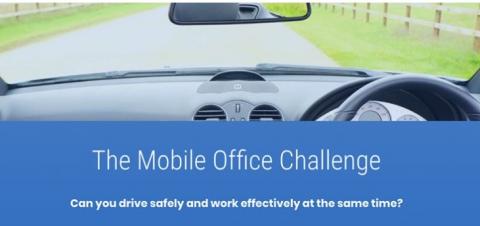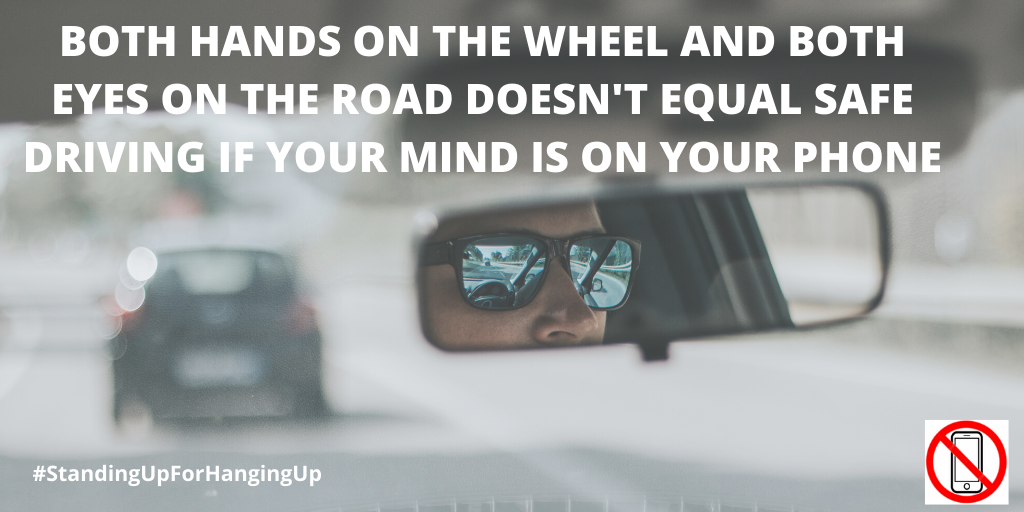You are here
- Home
- Research into Practice - Distracted Driving Research
Research into Practice - Distracted Driving Research

Here is an example of CPRL research being translated into practice:
Distracted driving research
Gemma Briggs, Graham Hole, Jim Turner and Graham Pike
Mobile phone use by drivers continues to be a significant road safety issue, with increasing numbers of individuals being killed or seriously injured on UK roads as a result of phone use. While the police have a variety of innovative approaches to detecting phone use and enforcing the law, the number of drivers who admit to regularly using their phones is also increasing, making enforcement challenging.
Our research focuses on hands-free mobile phone use, and has shown that drivers distracted by their phones are at increased crash risk, have poorer hazard detection ability, show diminished situation awareness and have much longer reaction times and stopping distances for any hazards they do notice. We have also shown that phone-using drivers demonstrate different visual scanning strategies to undistracted drivers and can look directly at a hazard yet fail to see it – a phenomenon known as inattentional blindness. We have proposed various theoretical explanations for both how and why phone use negatively affects driving performance. In general terms, the issue is that phone use imposes cognitive distraction and actively draws on attentional resources and perceptual processes which are also needed for safe driving.

In an attempt to help educate the general public about the dangers of phone use, we have created free online interactive activities which enable people to safely experience the cognitive distraction, and subsequent poorer hazard perception ability, caused by phone use. The first of these activities is called ‘Are you a focused driver?’, which measures your ability to keep track of a conversation whilst also looking out for hazards. This has been widely shared by policing partners and was used as part of the NPCC mobile phone enforcement campaign in 2020.
Our new activity is entitled ‘The mobile office challenge’. It focuses on drivers who make work calls behind the wheel and the task requires you to keep track of a phone conversation with some business clients while looking out for hazards. Importantly, in this task we ask people to rate their confidence in their performance in each task as they progress through the activity. This is because research has shown that most people consider themselves to be above average at driving, and those who use their phones are often unaware of how their driving is affected. In the absence of any critical event, such as a crash, many distracted drivers report high levels of confidence in their ability to multitask safely. Our interactive challenges this misconception by allowing people to directly test their multitasking performance and compare their confidence with their accuracy.
Both of our interactive activities are aimed at the general public and try to take a ‘gamified’ approach to sharing research evidence whereby the user experiences the distraction for themselves, rather than simply being told about it. The hope is that these semi-immersive tools can play a useful part in education and potential attitude and behaviour change.
To find out more about our research, try out the interactive activity! On completion you can view your results and a video which answers frequently asked questions such as ‘If I’ve got both hands on the wheel and my eyes on the road, what’s the problem?’ and ‘What’s the difference between a hands free call and talking to a passenger?’. You can also visit our DrivingChange project website for more information: https://drivingchange.webflow.io/
The research publications which form the basis of these activities are:
- Briggs, G. F., Hole, G. J., & Turner, J. A. (2018). The impact of attentional set and situation awareness on dual tasking driving performance. Transportation Research Part F: Traffic Psychology and Behaviour, 57, 36-47. https://doi.org/10.1016/j.trf.2017.08.007
- Briggs, G. F., Hole, G. J., & Land, M. F. (2016). Imagery-inducing distraction leads to cognitive tunnelling and deteriorated driving performance. Transportation Research Part F: Traffic Psychology and Behaviour, 38, 106–117. https://doi.org/10.1016/j.trf.2016.01.007
Both interactive activities were written by Gemma Briggs and Jim Turner and are hosted on OpenLearn. For further information about this research please contact Gemma at gemma.briggs@open.ac.uk
.png)
Upcoming Events
Online Seminar: Trust and confidence in policing
Wednesday, May 22, 2024 - 13:00 to 14:30
Online Membership Group Meeting
Thursday, June 13, 2024 - 10:30 to 12:30